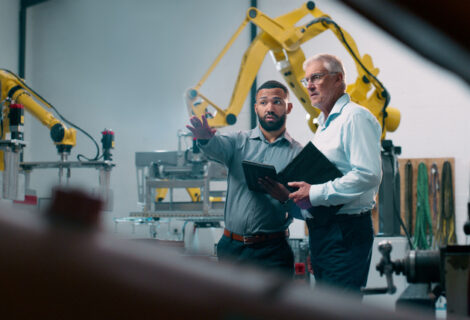Equipment Financing Gets a Major Tax Boost in 2025
Business owners looking to upgrade their equipment have received welcome news from Washington. Recent tax law adjustments through the 2025 “One Big Beautiful Bill Act” have significantly enhanced the immediate tax deductions available for equipment purchases, making financing more attractive than ever before.
These changes represent a dramatic shift from the restrictive policies of recent years. After watching bonus depreciation rates steadily decline and facing tighter interest deduction rules, businesses can now take advantage of restored and expanded tax benefits that make equipment investments more financially appealing.
Understanding how these new provisions work—and how they interact with equipment financing—could save your business thousands of dollars in taxes while helping you acquire the assets you need to grow.
Key Tax Law Adjustments for 2025
The 2025 tax legislation introduces four major changes that directly impact how businesses approach equipment financing and purchasing decisions.
100% Bonus Depreciation Returns
The most significant change reverses the gradual phase-down of bonus depreciation that saw rates drop to 60% in 2024. For qualified property placed in service after January 19, 2025, businesses can once again take a 100% deduction on the cost of equipment in the first year.
This restoration makes equipment financing particularly attractive because businesses can deduct the full cost upfront without paying the entire purchase price in cash. The benefit applies to both new and used equipment, giving companies flexibility in their acquisition strategies.
Consider a manufacturing company that finances $500,000 worth of new machinery. Under the restored 100% bonus depreciation, they can deduct the entire $500,000 in the year the equipment is placed in service, even though they’re making monthly loan payments over several years.
Expanded Section 179 Limits
Small and medium-sized businesses receive additional benefits through substantially increased expensing limits under Section 179. The maximum deduction cap has been raised to $2.5 million for 2025, while the phase-out threshold—the point at which the deduction begins to decrease—has increased to $4 million.
These higher limits mean more businesses can expense a greater portion of their equipment costs immediately, lowering their taxable income in the acquisition year. Previously, companies with significant equipment purchases might have exceeded the lower limits, forcing them to depreciate assets over multiple years.
A construction company purchasing $2 million worth of equipment can now deduct the full amount under Section 179, whereas under previous limits, a portion would have been subject to traditional depreciation schedules.
Enhanced Interest Deduction Rules
The legislation also modifies business interest deduction calculations, benefiting companies that carry significant debt for equipment purchases. The limit for deducting business interest has reverted to an Earnings Before Interest, Taxes, Depreciation, and Amortization (EBITDA) calculation, replacing the stricter EBIT-based formula.
This change proves particularly beneficial for capital-intensive businesses. By using the more expansive EBITDA calculation, many companies can deduct more interest on their financed equipment, reducing the overall cost of borrowing.
A logistics company with substantial equipment loans will now be able to include depreciation and amortization in their earnings calculation, potentially allowing them to deduct more of their financing costs.
Strategic Application of Multiple Deductions
Under the new tax rules, businesses can maximize their tax savings by applying these incentives in a specific order. Most businesses will apply the Section 179 deduction first to maximize their write-off up to the annual limit. For any remaining eligible costs, they can then apply the 100% bonus depreciation.
This layered approach allows businesses to deduct the entire purchase price of qualified equipment in the first year, creating substantial cash flow benefits that can help offset financing costs or fund additional investments.
Equipment Financing Considerations Under New Rules
These tax law adjustments highlight several important factors businesses should consider when planning equipment acquisitions.
Lease vs. Loan Decisions
The best financing method depends on your business’s specific financial situation. Both leases and loans allow businesses to take advantage of these enhanced deductions, but your overall tax strategy, cash flow needs, and asset lifecycle should guide your decision.
Equipment loans may be preferable when you want to own the asset and benefit from its full depreciation value. Leases might make more sense for equipment that becomes obsolete quickly or when you prefer predictable monthly payments without maintenance responsibilities.
Professional Guidance is Essential
The specifics of how these rules apply can be complex, particularly when combining multiple deduction methods or dealing with used equipment purchases. Consulting with a CPA or tax advisor ensures you understand how these changes impact your specific business and maintain compliance with IRS regulations.
Tax professionals can help you model different financing scenarios and determine which approach maximizes your tax benefits while supporting your operational needs.
Timing Considerations
To maximize benefits, qualified assets must be purchased, financed, or leased and “placed into service” during the applicable tax year. This requirement makes timing crucial for businesses planning major equipment acquisitions.
Companies should coordinate with their financing partners to ensure equipment delivery and installation schedules align with their tax planning objectives.
Making Equipment Financing Work for Your Business
The enhanced tax benefits available in 2025 create compelling reasons to move forward with equipment investments. However, successful implementation requires careful planning and coordination between your operational needs, financing options, and tax strategy.
Start by identifying equipment needs and evaluating how the new tax benefits impact your acquisition costs. Work with financing partners who understand these tax implications and can structure deals that maximize your advantages. Most importantly, engage tax professionals early in the process to ensure your approach aligns with your broader business objectives.
These tax law changes represent a significant opportunity for businesses ready to invest in their growth. By understanding and properly utilizing these enhanced deductions, you can reduce the effective cost of equipment financing while building the operational capacity your business needs to succeed.





